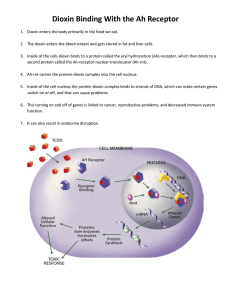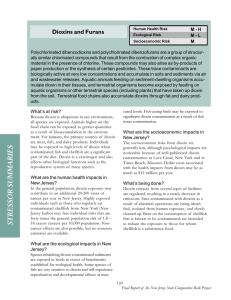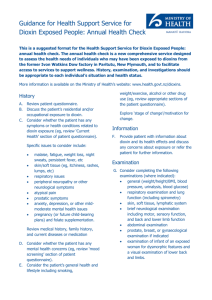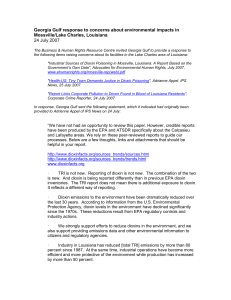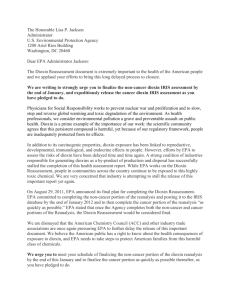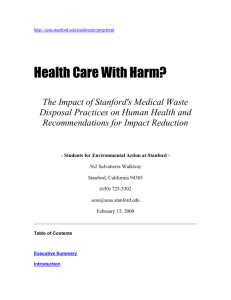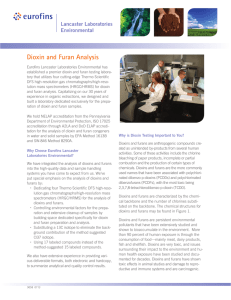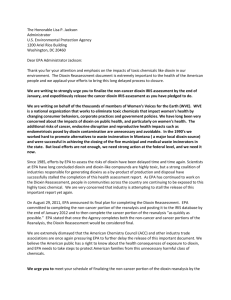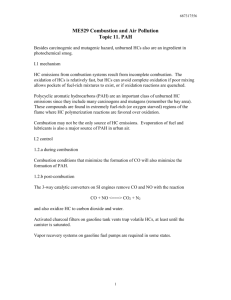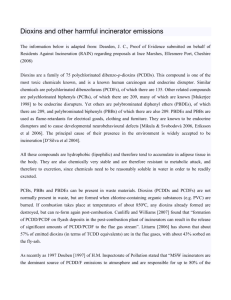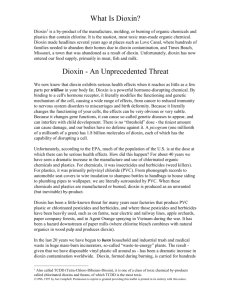DIOXINS
advertisement
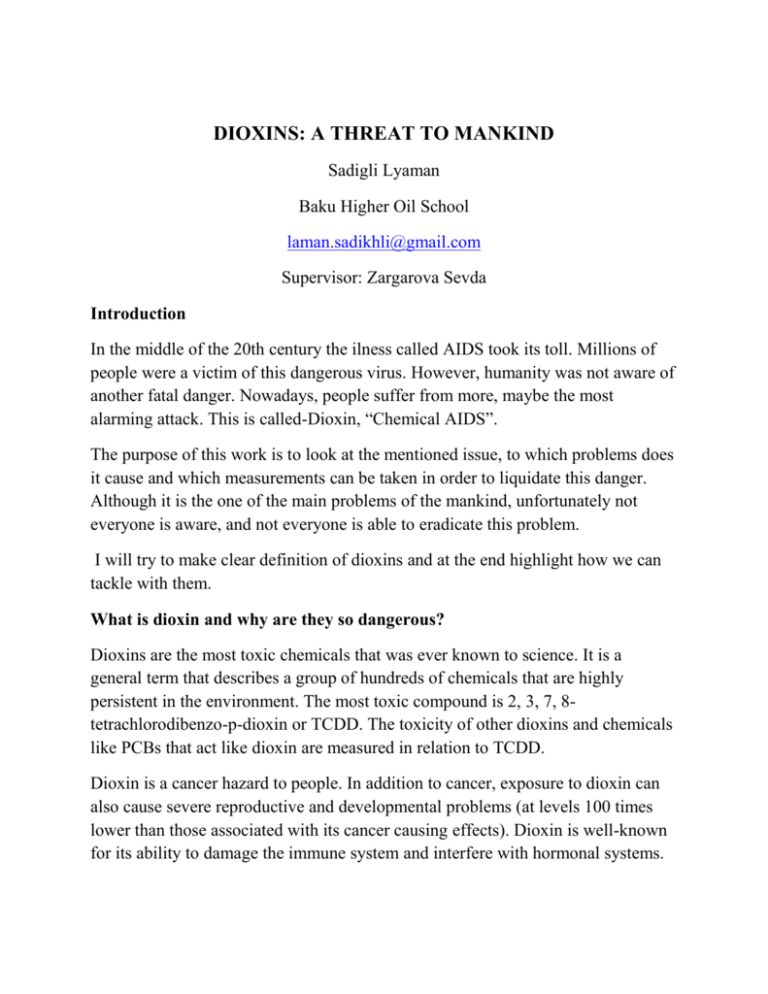
DIOXINS: A THREAT TO MANKIND Sadigli Lyaman Baku Higher Oil School laman.sadikhli@gmail.com Supervisor: Zargarova Sevda Introduction In the middle of the 20th century the ilness called AIDS took its toll. Millions of people were a victim of this dangerous virus. However, humanity was not aware of another fatal danger. Nowadays, people suffer from more, maybe the most alarming attack. This is called-Dioxin, “Chemical AIDS”. The purpose of this work is to look at the mentioned issue, to which problems does it cause and which measurements can be taken in order to liquidate this danger. Although it is the one of the main problems of the mankind, unfortunately not everyone is aware, and not everyone is able to eradicate this problem. I will try to make clear definition of dioxins and at the end highlight how we can tackle with them. What is dioxin and why are they so dangerous? Dioxins are the most toxic chemicals that was ever known to science. It is a general term that describes a group of hundreds of chemicals that are highly persistent in the environment. The most toxic compound is 2, 3, 7, 8tetrachlorodibenzo-p-dioxin or TCDD. The toxicity of other dioxins and chemicals like PCBs that act like dioxin are measured in relation to TCDD. Dioxin is a cancer hazard to people. In addition to cancer, exposure to dioxin can also cause severe reproductive and developmental problems (at levels 100 times lower than those associated with its cancer causing effects). Dioxin is well-known for its ability to damage the immune system and interfere with hormonal systems. Dioxin sources The major sources of dioxin are in our diet. Since dioxin is fat-soluble, it bioaccumulates, climbing up the food chain. Dioxins are though as hydrophobic (water-fearing) and lipophilic (fat-loving). This means that dioxin, when it settles on water bodies, will rapidly accumulate in fish rather than remain in the water. The same goes for other wildlife. Dioxin works its way to the top of the food chain. Problem solution Nowadays, protection from dioxins is the main problem that should be immediately eraticated. In developed countries food is analyzing for dioxin very strictly. Proper incineration of contaminated material is the best available method of preventing and controlling exposure to dioxins. It can also destroy PCB-based waste oils. The incineration process requires high temperatures, over 850°C. For the destruction of large amounts of contaminated material, even higher temperatures - 1000°C or more - are required. It is a pity that in our country dioxins had not been yet monitored. Dioxin laboratories should be built up. At least antidioxin society has to make more people aware of this danger. More awareness means more aspiration to act.
